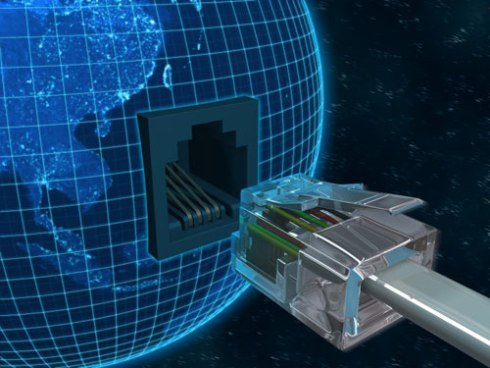The way it was in net, CP technology in Davao City
by Cha Monforte
Events in the past are easily recalled when one finds things, objects of the past. When one starts to get older, recollection can be blurred and hazy for the details but often not for the main, important episode, fact or process. Often it’s your locale where your recollection revolves on and over, and springs from.
I recently found the thin 8-inch floppy disk while doing housecleaning and my mind raced back to the old PCs in the early 90s. I remembered the blue screen, the white fonts and blinking cursor after the DOS (disk operating system) got in, and you started typing in. Then you used the audible matrix dot printer. Towards the mid 90s, Bill Gates’ Microsoft Windows came in, putting colors, fastness and ease in computing.
The infancy of mass computing in the Davao City at that time came with the entry of analog cellphones. My first CP was 5110 and I bought it at pricey P5,000. It’s down to P300 now after the digital CPs got a market boom. The still expensive Android and smart CPs now will surely go the way the 5110 went. But that’s when manufacturers and developers got billions of bucks from selling and smarter CPs appear in the market. But I must not wait as mobile net-capable phone is requisite of trendy social media-based journalism.
When I worked at a government office at the back of Ateneo de Davao University, along the narrow Juan Luna Street from the early 90s to an early year of the next decade, I saw the first internet cafes in the city flourished side by side to each other. It was in the next door, a small webpage and software developer, Digilution (owned by a US-based Davaoeno IT wizboy Rex), that I first got to know of what an Internet is. I venture to recall, that was 1994.
At that time internet was still young, and the speed of the lowest subscribed internet was so slow. I recall Mozcom as a pioneer net provider in the city. I did online research, and discovered that the net could feed you awesome billions of bytes of information to whatever words you keyed in in Yahoo search box. It was about in the mid 90s that I first saw someone keying in in his CP. The text-capable CP emerged and had the beeper phased out.
There was yet no Google at that time. The MIRC was the most used chat service. Just next after the MIRC, designed in black-and-white by default, the Alta Vista and Geocities provided chat forum in colors. It was then that I got to know more of chat slangs as lol, brb, etc. Yahoo was more of search and email stuff. Then towards the late 90s Yahoo introduced the Yahoo Messenger (YM), which got so popular in the country until Facebook replaced it.
It was YM that provided the venue for many Pinay hot moms and byudas to flirt and hope for second happiness with foreigners, as YM showed many usual horny Indians in the wild, wired net that goes so wireless now in the age of smart CPs and tablets (no pun intended, just stating an observed fact). But still I have my Yahoo email ad while having also the latecomer Google’s Gmail ad. I suspected it was FB which killed my Friendster account.
My FB timeline showed that I joined Facebook on Dec. 6, 2008. That was six years ago, the time when I saw FB starting getting popular in the city. When Friendster was a hit, the online gaming had its boom. “Facebook was founded on February 4, 2004 by Mark Zuckerberg,” stated Wikipedia, the top online encyclopedia-library that is already accepted as source and annotation in masters and doctorate studies. Hasta la vista libraries! A year prior that I saw now Senator Bam Aquino hosting on ANC calling Pinoy IT wizards and capitalists to seize in on computer- and net-based incubation business. But obviously hindi tayo nakasakay as India now is far ahead than us in outsourcing and selling software from the programming base, though we may have fairer market niche of call centers.
Changes in IT industry is giving us opportunities ad infinitum. It was the way the CP and net technology then that we observed and tried to seize on. But we bungled in the great IT opportunity. Where lies the blame? Indian author Kandar said that the “United States’ technological lead was driven in no small part by the brain power of brilliant immigrants, many of whom came from India.” It was only beyond 1999 that the Indian government aggressively backed up its computer engineers and scientists, on the premise that intellectual capital and knowledge development in electronics and telecommunications were vital to India’s growth and development.
At that time, we had IT brain power at par with India’s but we left our programmers at the mercy of the ill-equipped Tesda-accredited tech-voc schools after we had the IT brain drain. We shrank from launching ambitious flagship IT programs and ventures and focused to other things. Immigrant Indian programmers working in the US returned to their country, cajoled by their government. India has now Bangalore, equivalent to California’s Silicon Valley.
Sadly, we are largely IT users than inventors, developers. Sadly, our government, then and now, buries its head on the sand while we top in the world then in texting and and now in selfies. (@chamonforte )
)
Hi! I am a robot. I just upvoted you! I found similar content that readers might be interested in:
https://hashtagsmindanao.wordpress.com/2014/04/
Congratulations @chamonforte! You received a personal award!
Click here to view your Board
Congratulations @chamonforte! You received a personal award!
You can view your badges on your Steem Board and compare to others on the Steem Ranking
Vote for @Steemitboard as a witness to get one more award and increased upvotes!